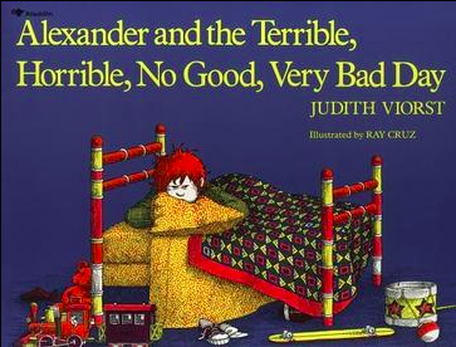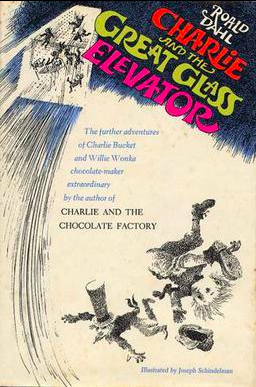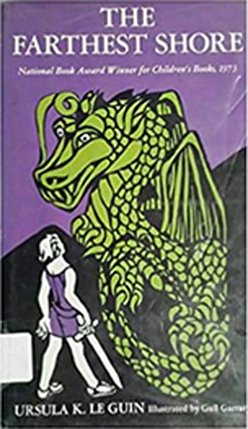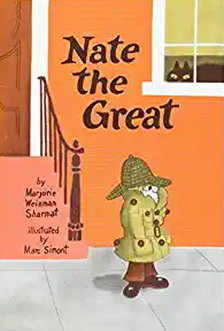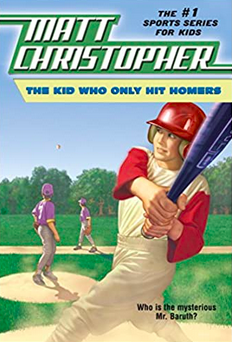TOP 12 BEST-SELLING BOOKS FROM 1972, NOVA RIF'S FOUNDING YEAR
On this page, please find our 12-month "calendar" of the top-selling children's books published in 1972, RIF of NOVA's founding year. Some on the list have stood the test of 50 years and are still widely read. Others are less well known. Our countdown started in January 2022 with book #12 and culminated with the top-selling 1972 children's book in December 2022.
Book # 1
The top selling children's book of 1972, NOVA RIF's founding year, is Alexander and the Terrible, Horrible, No Good, Very Bad Day. This 1972 ALA Notable Children's Book was written by Judith Viorst, illustrated by Ray Cruz, and published by Atheneum Books, and it was made into a musical and a Hollywood movie. Viorst followed this book up with three sequels, Alexander, Who Used to be Rich Last Sunday, Alexander, Who's Not (Do You Hear Me? I Mean It!) Going to Move, and Alexander, Who's Trying His Best to Be the Best Boy Ever.
Alexander and his two older brothers, Anthony and Nick, are based on Viorst's own three sons of the same names. In the best seller, Alexander wakes up with gum in his hair, slips on his skateboard, gets snubbed by his best friend — and it just gets worse. According to an interview with Judith Viorst written by NPR's Elizabeth Blair in June 2022, Alexander is still easy to recognize 50 years after he entered the world of children's books. "The book is so popular," Blair wrote, "'Viorst's string of sad adjectives entered the vernacular; it's been used to describe lousy days, weeks and years far and wide, from political leaders to corporations. Teachers have even used poor Alexander's misadventures to teach kids about cause and effect and ethics." Alexander is all grown up now, with three children of his own. When they were little, he read them their grandmother's books — including this one. Blair continues: "'This is a guy who's sort of been in my life forever,' says Alexander, 'and he keeps having crappy days. But I'm gonna keep rooting for him.' Fifty years after it was written, Judith Viorst is happy with how Alexander turned out. 'I look at this fierce tiger of a little boy and I see this loving, benevolent father and head of a family and it's a thrill to me practically every day,' she says." Find Blair's interview with Judith Viorst by clicking here. This book, for sure, has stood the test of time for 50 years...and counting! |
Three Traits of a Good Children's Book Children’s books quite literally come in all shapes and sizes, as well as all tones of voice, types of plots, and levels of vocabulary. The questions of what makes one book more important, popular, or simply better than another is widely debated—but here are three characteristics that many good children’s books possess.
1. An Interesting, Relatable Story The story in a good children’s book will be engaging and captivating. Whether it is a realistic story about a family pet or a surreal story about a castle on Mars, some aspect of the story or character will usually be relatable to children. Even on Mars, the protagonist could be a child or could be a slimy monster who learns about sharing. When children can relate to a story, they can connect with it deeply and remember it more clearly. In You’re Only Young Twice: Children’s Literature and Film, Professor Tim Morris says that, “a book that children will like typically has a central character who is a believable child, and shows that child confronting the world with energy and imagination.” Books that skillfully take on universally relatable topics such as fear, love, and adventure tend to stay relevant. As Education.com tells us, “books stand the test of time because their authors write about topics that matter.” 2. Engaging Language A good children’s book will typically have interesting language. The rhythm of the language will be pleasing and the words in the story will flow naturally from page to page. Rhyming is a popular and powerful way to involve children in developing active listening skills and phonemic awareness when they are being read to and early phonics skills when they are learning to read. The vocabulary in the book should be relatable but somewhat challenging at times to the age group of readers it is intended for. Learning a few new words from a book makes reading it a more valuable learning experience. If the student audience is bilingual, as is increasingly the case in the U.S., it is ideal for the book to be bilingual as well. 3. Multicultural Many good children’s books are inclusive and informative about the many cultures of our world. They may include diverse characters, stories, songs and traditions from around the globe, or even be written in a bilingual format. Children’s books that honor various cultures can affirm students’ identities, teach them about their fellow classmates and community members, and begin to increase understanding between cultures at an early age. A good children’s book also draws children into the story, asks them questions, and lends itself to discussion. A good children’s book is one that children genuinely enjoy while they are gaining some understanding of the world. The Children’s Book Council says that, “it is essential that they enjoy their reading experiences so that they will nurture those skills for the rest of their lives.” You will know a child has found a good book that resonates with them when they want to hear or read it more than once, and when they remember the story and even re-tell it to you. High quality children’s books teach children to think and wonder about their world and about themselves. (Blog courtesy Lectura Books; To see its collection of bilingual children's books, please click here.) |
|
Book # 2
Number 2 on the list is Tales of a Fourth Grade Nothing, written by American author Judy Blume, published in 1972 by Dutton, and illustrated by Roy Doty. It is the first in the Fudge series and was followed by Otherwise Known as Sheila the Great, Superfudge, Fudge-a-Mania, and Double Fudge. Life with his little brother, Fudge, makes Peter Hatcher feel like a fourth grade nothing. Whether Fudge is throwing a temper tantrum in a shoe store, smearing mashed potatoes on the walls at Hamburger Heaven, or trying to fly, he's never far from trouble. He's an almost three-year-old terror who gets away with everything, and Peter's had it up to here! When Fudge walks off with Dribble, Peter's pet turtle, it's the last straw. Peter has put up with Fudge for too long. Way too long! How can he get his parents to pay attention to him for a change? |
Book #3
Number 3 on the list is Charlie and the Great Glass Elevator by Roald Dahl and published in 1972 by Alfred A. Knopf, Inc. It is the sequel to Charlie and the Chocolate Factory, continuing the story of young Charlie Bucket and chocolatier Willy Wonka as they travel on an elevator through space and time. Visiting the world's first space hotel, battling the dreaded Vermicious Knids, and saving the world are only a few stops along this intergalactic joyride. Roald Dahl was a British novelist, short-story writer, poet, and screenwriter who penned 19 children's books over his decades-long writing career. His books have sold more than 250 million copies worldwide. He published the popular book James and the Giant Peach in 1961. In 1964, he released Charlie and the Chocolate Factory, which was later adapted for two films. Dahl has been called "one of the greatest storytellers for children of the 20th century." |
Book # 4
Number 4 on the list is The Farthest Shore, a fantasy novel by American author Ursula K. Le Guin, first published by Atheneum in 1972. It is the third book in the series commonly called the Earthsea Cycle. As the world and its wizards are losing their magic, Ged — powerful Archmage, wizard, and dragonlord — embarks on a sailing journey with highborn young prince, Arren. They travel far beyond the realm of death to discover the cause of these evil disturbances and to restore magic to a land desperately thirsty for it. The Farthest Shore won the 1973 National Book Award for Children's Books. Geared for middle grade readers, Le Guin's Earthsea Cycle has earned a treasured place on the shelves of fantasy lovers, alongside the works of such authors as J. R. R. Tolkien and C. S. Lewis. |
|
Book # 5
Julie of the Wolves was written by Jean Craighead George, and published by Harper in 1972 with illustrations by John Schoenherr. It features a young Inuk girl Miyax (known by the non-Eskimo name Julie) who runs away from a home situation and becomes lost in the Alaskan wilderness without food, shelter, or even a compass.
Slowly, she is accepted by a pack of Arctic wolves, and she comes to love them as family. With their help, and drawing on her father’s training, she struggles day by day to survive. In the process, she is forced to rethink her past and to evaluate the changes forced upon her culture from outside. The book received the 1973 Newbery Medal for the “most distinguished contribution to American literature for children.” |
Book # 6
Number 6 on the list is: The Best Christmas Pageant Ever by Barbara Robinson. The story follows the outrageous shenanigans of the Herdman siblings, or “the worst kids in the history of the world.” The six kids lie, steal, cuss their teachers, smoke cigars, and even set a shed on fire. So no one is prepared when they storm Sunday school for the free snacks and take over the annual Christmas pageant.
But Christmas magic is all around. How the Herdmans turn a series of disasters into what everyone agrees is the best Christmas pageant ever is a hilarious, touching, and unforgettable tale that has been adapted as a stage play and a television movie. |
Book # 7
Who is Sheila Tubman? Even Sheila isn’t sure. Sometimes, she feels like confident Sheila the Great, and other times, she’s secret Sheila, who’s afraid of spiders, swimming, and, most of all, dogs. When her family decides to leave the city for a summer vacation in the country, Sheila will have to suffer everything from long-eared dogs to swimming lessons to creepy spiders.
Otherwise Known as Sheila the Great is a children's novel by Judy Blume, first published in 1972. It is the second book in the Fudge series. Blume is an American writer of children's, young adult, and adult fiction. Blume began writing in 1959 and has published more than 25 novels. |
Book # 8
Number 8 on the list is: In a People House. When a spunky mouse invites a passing bird to see what's inside a "people house," chaos ensues. Along with the silly fun, beginning readers can learn the names of 65 common household items -- and that people are generally not pleased to find mice and birds in their houses!
Published by Random House Books for Young Readers, this book was illustrated by Roy McKié and written by none other than Dr. Seuss, a.k.a. Theodor Seuss Geisel. He authored this book as Theo. LeSieg -- LeSieg being Geisel spelled backward! |
|
Book # 9
Number 9 on the list is: The Upstairs Room, a 1972 Holocaust survivor autobiography by Johanna Reiss documenting her childhood in occupied Holland during the Nazi invasion. The book, published by the Thomas Y. Crowell Co., won many awards, including a 1973 Newbery Honor and the 1973 National Jewish Book Award for best children's book. |
Book # 10
Number 10 on the 1972 list is: Nate the Great by Marjorie Weinman Sharmat, now an imprint of the Penguin Group. Originally published in 1972, the book became a series of 26 chapter books, geared to emerging readers. Nate is a boy detective who wears a Sherlock Holmes-style deerstalker hat, loves pancakes, and always catches his culprit, usually with the help of his dog Sludge. Illustrator Marc Simont drew the first 20 “Nate” books. At one time, Nate's image adorned millions of boxes of Cheerios!
|
Book # 11
Freaky Friday is a comedic children's novel written by Mary Rodgers. It was first published by Harper & Row in 1972 with cover art by Edward Gorey. The book has had many different covers over the years and has been adapted for the stage and for several films, including versions in 1976, 1995, 2003, and 2018. It was also reinterpreted as a horror film. The story features a day when 13-year-old Annabel Andrews and her mother switch bodies and, in the process, learn to appreciate each other's lives and perspectives.
|
Book # 12
This children's novel about baseball was the first in a series of four novels featuring a boy who is trained to play baseball by supernatural visitations from former Major League players.
In the story, Sylvester Coddmeyer III is having trouble hitting on his little league baseball team and is thinking about quitting baseball. Along comes George Baruth, who promises to help Sylvester become one of the best players ever. Before long, he is hitting only homers to the disbelief of his friends. |


